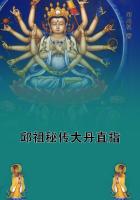Temporary and Partial Canities.--Of special interest are those cases in which whiteness of the hair is only temporary. Thus, Compagne mentions a case in which the black hair of a woman of thirty-six began to fade on the twenty-third day of a malignant fever, and on the sixth day following was perfectly white, but on the seventh day the hairs became darker again, and on the fourteenth day after the change they had become as black as they were originally. Wilson records a case in which the hair lost its color in winter and regained it in summer. Sir John Forbes, according to Crocker, had gray hair for a long time, then suddenly it all turned white, and after remaining so for a year it returned to its original gray.
Grayness of the hair is sometimes only partial. According to Crocker an ***** whose hair was generally brown had a tuft of white hair over the temple, and several like cases are on record.
Lorry tells us that grayness of one side only is sometimes occasioned by severe headache. Hagedorn has known the beard to be black in one place and white in another. Brandis mentions the hair becoming white on one side of the face while it continued of its former color on the other. Rayer quotes cases of canities of the whole of one side of the body.
Richelot observed white mottling of hair in a girl sick with chlorosis. The whitening extended from the roots to a distance of two inches. The probable cause was a temporary alteration of the pigment-forming function. When the chlorosis was cured the natural color returned. Paullini and Riedlin, as well as the Ephemerides, speak of different colored hair in the same head, and it is not at all rare to see individuals with an anomalously colored patch of hair on the head. The members of the ancient house of Rohan were said to possess a tuft of white hair on the front of their heads.
Michelson of Konigsberg describes a curious case in a barrister of twenty-three affected with partial canities. In the family of both parents there was stated to be congenital premature canities, and some white hairs had been observed even in childhood. In the fifteenth year, after a grave attack of scarlet fever, the hair to a great extent fell out. The succeeding growth of hair was stated to have been throughout lighter in tissue and color and fissured at the points. Soon after bunches of white hair appeared on the occiput, and in the succeeding years small patches of decolored hairs were observed also on the anterior and lateral portions of the scalp. In the spring of 1880 the patient exhibited signs of infiltration of the apex of the right lung, and afterward a violent headache came on. At the time of the report the patient presented the appearance shown in Figure 89.
The complexion was delicate throughout, the eyelashes and eyelids dark brown, the moustache and whiskers blond, and in the latter were a few groups of white hair. The white patches were chiefly on the left side of the head. The hairs growing on them were unpigmented, but otherwise normal. The patient stated that his head never sweated. He was stout and exhibited no signs of internal disease, except at the apex of the right lung.
Anomalous Color Changes of the Hair.--The hair is liable to undergo certain changes of color connected with some modification of that part of the bulb secreting its coloring-matter. Alibert, quoted by Rayer, gives us a report of the case of a young lady who, after a severe fever which followed a very difficult labor, lost a fine head of hair during a discharge of viscid fluid, which inundated the head in every part. He tells us, further, that the hair grew again of a deep black color after the recovery of the patient. The same writer tells of the case of James B--, born with brown hair, who, having lost it all during the course of a sickness, had it replaced with a crop of the brightest red.
White and gray hair has also, under peculiar circumstances, been replaced by hair of the same color as the individual had in youth. We are even assured by Bruley that in 1798 the white hair of a woman sixty years of age changed to black a few days before her death. The bulbs in this case were found of great size, and appeared gorged with a substance from which the hair derived its color. The white hairs that remained, on the contrary, grew from shriveled bulbs much smaller than those producing the black. This patient died of phthisis.
A very singular case, published early in the century, was that of a woman whose hair, naturally fair, assumed a tawny red color as often as she was affected with a certain fever, and returned to its natural hue as soon as the symptoms abated. Villerme alludes to the case of a young lady, sixteen years of age, who had never suffered except from trifling headaches, and who, in the winter of 1817, perceived that the hair began to fall out from several parts of her head, so that before six months were over she became entirely bald. In the beginning of January, 1819, her head became covered with a kind of black wool over those places that were first denuded, and light brown hair began to develop from the rest of the scalp. Some of this fell out again when it had grown from three to four inches; the rest changed color at different distances from its end and grew of a chestnut color from the roots. The hair, half black, half chestnut, had a very singular appearance.
Alibert and Beigel relate cases of women with blond hair which all came off after a severe fever (typhus in one case), and when it grew again it was quite black. Alibert also saw a young man who lost his brown hair after an illness, and after restoration it became red. According to Crocker, in an idiotic girl of epileptic type (in an asylum at Edinburgh), with alternating phases of stupidity and excitement, the hair in the stupid phase was blond and in the excited condition red. The change of color took place in the course of two or three days, beginning first at the free ends, and remaining of the same tint for seven or eight days. The pale hairs had more air-spaces than the darker ones.















